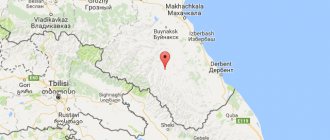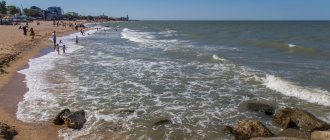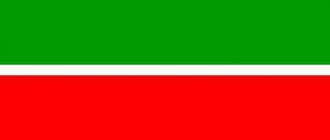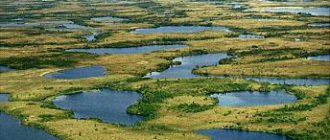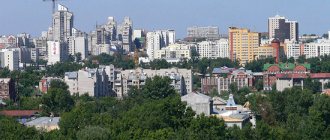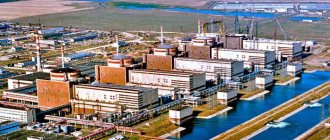The Republic of Dagestan has officially existed since 1921. In this regard, it is very young, although some of its cities are very ancient. This is a real country of mountains, where most of the territory is located at high altitudes. Despite this, the cities of Dagestan can hardly be called high-mountainous, because most of them are located closer to the Caspian Sea, and the most significant ones are located on a narrow strip along the coast.
Districts and cities of Dagestan
The capital of the republic a little later than its formation was the city of Makhachkala, which is currently the administrative center. It’s easy to see how many cities there are in Dagestan on the map and count them on your fingers. In total, there are 10 cities in the republic, each is the administrative center for its own urban district. Since 2013, the territory of the republic has been divided into 4 large territorial districts. Each district can be assigned a corresponding list of cities in Dagestan.
- Central district: Makhachkala, Kizilyurt, Buynaksk, Kaspiysk and Izberbash.
- Northern district: Yuzhno-Sukhumsk, Kizlyar, Khasavyurt.
- The southern district includes Dagestan Lights and Derbent.
- The mountain district includes Khunzakh, Botlikh, Akushinsky and many other areas.
So, we figured out how many cities there are in Dagestan, but besides them there are also urban-type settlements (there are 12 of them). The territory of the republic is also divided into municipal districts, there are 41 in total, and there are settlements in them.
Interesting facts about Dagestan cities
- The only ice-free port in Russia is located in Makhachkala.
- At one time, the republic was assigned a certain postal code. Today, the indexes of the cities of Dagestan are 368000 (the last three digits change), and the code of the region itself is 05.
- Each of the cities of the republic is distinguished by its originality. If you walk along the streets of Derbent, you can catch the charm of antiquity. And the streets of Kaspiysk and Izberbash delight the eye with clearly drawn lines and architecture typical of the Soviet period.
- Coastal cities include Derbent, DagOgni, Makhachkala, Kaspiysk and Izberbash. The rest do not have access to the Caspian Sea.
- Despite the fact that the territory of Dagestan is predominantly covered with mountain ranges, not a single city is even included in the top ten highest altitude large settlements in the Caucasus.
Brief description of cities
As a rule, large cities of Dagestan are located on flat territory in the coastal zone. All of them used to be small villages where residents were engaged in traditional crafts, until industry began to actively develop in the 20th century during Soviet times. In the Republic of Dagestan, not only agriculture is currently developed, but also various types of industry, although during perestroika many enterprises fell into decay. The ethnic composition of the population is very diverse; Dagestanis and Russians live here, as well as other representatives of different nationalities.
Climate
The climate in the north and central part of Dagestan is temperate continental and arid.
Dagestan is divided into three soil and climatic zones:
- mountainous - above 850 (1000) m (area 2.12 million hectares or 39.9% of the territory)
- foothill - from 150 (200) to 850 (1000) m (area 0.84 million hectares or 16% of the territory)
- flat - from −28 to 150 (200) m (2.35 million hectares or 43.3% of the territory).
Average temperatures in January range from +4°C in the valleys to −11°C in the highlands, in July from +30°C in the valleys to +8°C in the highlands. Precipitation per year is 200–300 and 600–800 mm, respectively.
The growing season is 200-240 days.
Makhachkala
This is the largest city in the Republic of Dagestan, its population is 588 thousand people. It is also the capital, political and economic center.
Once upon a time, Tarki-aul was located on the site of the city; caravans that went to the ancient city of Derbent stopped here. In 1844, the Petrovskoye fortress appeared here, and then the settlement received the name Petrovsk. The development of the city began at the end of the 19th century, when a railway was built from Rostov to the capital of Azerbaijan, Baku. Industrial enterprises began to appear here, and the population gradually grew. In 1921, the city acquired a new name - Makhachkala, the name comes from the name of the local revolutionary Makhach Dakhadayev.
In the 30s the city began to develop rapidly. Houses were built, streets were developed, water supply, hospitals and schools appeared, and in some places defense enterprises appeared. With the beginning of the 90s, the economy declined. Businesses were closing. In addition, radicals of extremist Islamic movements began to appear here. Despite this difficult period, the city is gradually being restored and improved. Today it is one of the most significant cities in the Caucasus; it is a scientific and economic center.
Derbent
Derbent is a real pearl of the Caucasus. Having been here, you can see how beautiful the cities in Dagestan can be; they have a unique architecture that emanates from antiquity. The combination of an interesting culture with stunning nature makes this republic very promising in terms of tourism. Impressive photos of a city in Dagestan called Derbent are proof of this.
Derbent is a very interesting city from a historical perspective. It is located in the so-called Caspian Passage. This is the place where the Caucasus Mountains are closest to the Caspian Sea, leaving only a small strip of plain 3 kilometers wide. It is warm here, the average temperature is +13 degrees, there are a lot of sunny days throughout the year. This city is one of the largest in terms of population, it ranks second in the Republic of Dagestan after the capital - Makhachkala.
It is believed that this is one of the oldest cities in the world. Its history has been going on for 5 thousand years, although in modern times it is officially considered to be only 2 thousand years. There is controversy about this. In Soviet times, it was assumed that the city was founded 2,700 years ago, as it was mentioned in ancient sources of the 8th-7th centuries BC. This point of view would be considered official if traces of settlements of the Early Bronze Age had not been found here, and their age is precisely 5 thousand years. It is officially accepted that the city is only 2000 years old, however, even this figure is impressive.
The city's name is Persian and means "Closed Gate". It can be assumed that these gates were closed to the encroaching conquerors. In ancient sources, these places had a similar name - “Caspian Gate”. This city was a strategically important point; many sought to take it under their power. At one time, the Scythians visited here, as well as the Cimmerians, Sarmatians, Huns, Parthians, Khazars and Turks. The Romans and Greeks fought for the Caspian Gate. The city was at one time under the rule of Tamerlane. In 1813 it became part of the Russian Empire. Currently, 120 thousand people live in the city, it is gradually improving and developing.
Hydrography
From the east, the territory of Dagestan is washed by the waters of the Caspian Sea. The south and middle part of the republic are occupied by the mountains and foothills of the Greater Caucasus, in the north the Caspian Lowland begins.
Rivers
The Terek and Sulak rivers flow through the central part of the republic. There are 6,255 rivers flowing in Dagestan (including 100 main rivers, with a length of more than 25 km and a drainage area of more than 100 km, 185 small and more than 5,900 smallest ones), the largest of which are Terek, Sulak, Samur, Rubas with tributaries. All rivers belong to the Caspian Sea basin, but only 20 of them flow into the sea.
Due to the dry climate, the north of Dagestan is poor in rivers. The existing rivers are used for irrigation in the summer and do not reach the sea.
The most abundant rivers are mountain rivers, which, thanks to their fast flow, do not freeze even in winter; they are characterized by comparative abundance of water and significant slopes.
Samur is the second largest river in Dagestan. The area of its basin is 7.3 thousand km². The source is located in the Rutul region of Dagestan. When it flows into the Caspian Sea, the Samur splits into branches and forms a delta. It is planned to build three hydroelectric power stations on the river and its main tributaries. The waters of Samur are also used for irrigation purposes: irrigation canals have been drawn from the river to irrigate Southern Dagestan (Samur-Derbent Canal) and neighboring Azerbaijan (Samur-Apsheron Canal).
Sulak is formed at the confluence of the Kazikumukhskoe Koisu, Avar Koisu and Andiyskoe Koisu rivers, which originate in the Greater Caucasus Mountains. The area of its basin is 15.2 thousand km². Sulak accounts for half of all hydropower resources in Dagestan; the Chirkeyskaya HPP, Miatlinskaya HPP, Gelbakhskaya HPP, Chiryurt HPP-1 and Chiryurt HPP-2 are located here.
Lakes
Lake Kezenoyam (Botlikhsky district, most of the lake belongs to the Vedeno district of Chechnya) - the largest and deepest mountain lake in the North Caucasus
Nizhnetersky lakes
Lake Ak-Gol - Makhachkala
Sights of Derbent
The main attraction of Derbent is its fortress walls. The Derbent fortress was built by the Persians in the 6th century under Shah Khosrow I. It was erected to protect against the Khazars and other nomadic peoples from the north. For construction, instead of the previous masonry, more reliable rough stone blocks were used.
The Naryn-Kala citadel is located on a hill 3 kilometers from the sea. Two walls stretch from it to the banks. In the east, the fortress wall rushes to the sea for almost half a kilometer. The Derbent fortress was included in the UNESCO list in 2003. Inside the fortress there is also a very ancient church, which miraculously survived from the 5th century.
The Juma Mosque is the main religious building of Derbent, and the whole of Dagestan. In addition, this is the oldest mosque in Russia; for a long time it was the only one in the southern part of Dagestan. Besides it, there are several other ancient mosques. These are the Minaret-mosque, Bala-mosque, Kirkhlyar-mosque.
The museums in the city may also be of interest. For example, the unusual Carpet Museum is located in an Armenian church. In Dagestan, carpets are still traditionally woven by hand; you can see beautiful ornaments and patterns on them.
Geography
Dagestan is located in the northeastern part of the Caucasus, along the coast of the Caspian Sea. In the northern part of the republic there is a lowland, in the southern there are foothills and mountains of the Greater Caucasus. The length of the territory from north to south is about 400 km, from west to east - about 200 km. Dagestan borders on the Stavropol Territory and Kalmykia in the north, the Chechen Republic and Georgia in the west, and Azerbaijan in the south. On land and the Caspian Sea there are borders with five countries - Azerbaijan, Georgia, Kazakhstan, Turkmenistan and Iran. On the border with Azerbaijan is the southernmost point of Russia (41°10′ N).
Dagestan Lights
This city got its name due to a very unusual phenomenon. As a result of the earthquake in 1904, gas emissions occurred here that looked like torches. Soon, small businesses began to open in these places. The settlement began to develop slowly; the official founding date was 1914. The settlement acquired urban status only in 1991.
Dagestan Lights is the youngest city in the republic; it is a satellite of Derbent. There is a glass factory here; Molotov cocktails were supplied from here during the war. Today it is the largest enterprise in the city.
Kizlyar
The official date of foundation of this city is 1735, but before that there was already a settlement here - there was an Arab fortress here. Then the Russians built a fortification here under the leadership of General-in-Chief Levashov, and a monument was erected in his honor in the city. And the history of the city dates back to those times. In the 18th-19th centuries it was a significant center of trade.
Today, agriculture is most developed here. The city became famous thanks to knives. Kizlyar knives are known all over the world; significant weapons factories are located in the city.
Izberbash
This city is also young, founded in 1932, although the archives contain information about the existence of an earlier settlement of Ulu-Izbar on this site. It is mentioned in the camp journal of Emperor Peter I, dated 1722.
Izberbash appeared thanks to the development of the oil industry here. Oil production takes place on the shelf of the Caspian Sea, the city itself is located on the coast 65 kilometers from the capital of the republic. It was built by oil workers and is recognized as the most comfortable in the country. In addition to oil production enterprises, there is a radio plant, a clothing factory, two confectionery factories, a city dairy factory, and a bakery. Nectars and juices are produced, and there is also wine and cognac. Notable is Mount Pushkin-Tau, whose outline resembles the profile of a famous classic.
Buynaksk
One of the oldest cities in Dagestan. In its place, at the end of the 14th century, an aul arose, at the same time in 1386, the camp of Tamerlane’s army was located here. Almost 3.5 centuries later, in 1832, a Russian fortification was founded here with the former name Temir-Khan-Shura (Lake Tamerlane). This name remained until 1922. During the civil war, this settlement was the capital of the republic of the mountains. The modern name comes from the surname of the revolutionary Buinaksky. At the end of the twentieth century, sad events took place here, namely an earthquake in 1970 and a terrorist attack in 1999, when a residential building was blown up.
Currently, 64 thousand people live here, Buinaksk is multinational. It is included in the list of cities in Dagestan that belong to the central district. The nature in the vicinity of the city is very beautiful; the Shura-Ozen mountain river flows nearby. The climate is mild, so there are sanatoriums for tuberculosis patients here.
The Republic of Dagestan
A subject of the Russian Federation, a republic within it.
It is part of the North Caucasus Federal District and is part of the North Caucasus Economic Region. Established on January 20, 1921 as an autonomous republic within the RSFSR. The capital of the republic is the city of Makhachkala .
Content:
- Administrative division
- Geography
- Hydrography
- Climate
- Demography
- National composition
It borders with the Republic of Azerbaijan in the south, with Georgia in the southwest, as well as with the Chechen Republic in the west, with the Stavropol Territory in the northwest and with the Republic of Kalmykia in the north.
According to the Constitution of the Republic of Dagestan, the state languages are Russian and the languages of all peoples inhabiting the republic. Among them, Avar, Agul, Azerbaijani, Dargin, Kumyk, Lak, Lezgin, Nogai, Rutul, Tabasaran, Tat, Tsakhur languages have written languages and official status.
